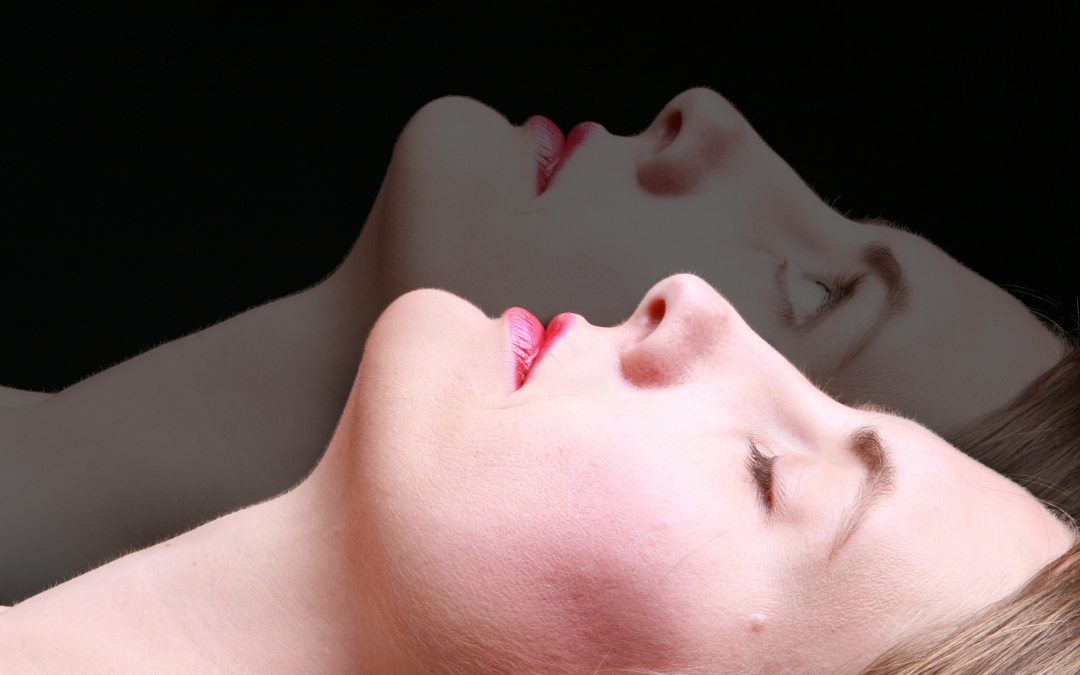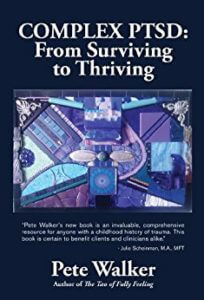There are many myths and misconceptions about dissociation that can prevent people from getting the help they need. But understanding the signs of dissociation could be your first step to living a life of connection and meaning.
As we move through daily life, it’s easy (and common) to switch on cruise control to avoid feeling overwhelmed by emails, phone calls, messages, kids, and never-ending to-do lists. We tune out in response to our environment.
But when zoning out leaves you feeling disconnected from your body, sense of self, and the world around you, you may be dissociating.
So, what is dissociation
Dissociation is a protective psychological reaction that probably helped you deal with some tough stuff once upon a time.
If you’ve been in a stressful situation that you couldn’t change or escape from, dissociating helps you survive. It’s a normal response to childhood trauma (including losing a loved one, sexual/physical abuse, and neglect), a traumatic event, or extreme stress. It can also come about as part of a mental illness.
When you are threatened, and when fighting or fleeing is not an option, your nervous system steps into action to protect you. Like a security system, the vagal nerve shuts down the body, causing you to ‘leave’ it, so you can survive the situation you’re in.
How do you know if you’re dissociating, not just daydreaming?
Here are some warning signs to look for:
- You feel like you’re in a dream or movie. This is known as de-realisation. It’s an out-of-body experience that may leave you feeling spaced out, like you’re watching yourself from a distance or seeing the world through a thin veil.
- You feel disconnected from your body. Also known as de-personalisation, it leaves you feeling numb, unable to feel pain, detached, and in extreme cases unable to recognise yourself in the mirror.
- Your mind feels blank. If you’re experiencing dissociative amnesia, you may feel light-headed or unable to remember details of a specific time or event, or vital personal information like who you are, if you are married or have children, or what your occupation is.
- You have flashbacks. Flashbacks can occur uninvited, stirring up images, sensations, or emotions of a past traumatic experience. It can feel like you’re re-experiencing the real thing again, so your heart may pound, and your muscles may react as they did at the time.
- You develop separate personalities. In more extreme cases of dissociation, or Dissociative Identity Disorder (DID), a person’s sense of self can divide into separate self-parts or personality states. You may use different, have different opinions or experience gaps in their memory when fragmented in this way.
Dissociation can feel like you’re a passenger in your own body rather than the driver. But it’s nothing to be ashamed of. It shows that your brain has been working very hard to keep you safe.
And once you know what you’re dealing with, you can learn some new ways to cope with stress and painful memories.
How do I cope with dissociation?
Dissociation can be life-saving. But while it kept you safe and protected your psyche at first, when the immediate danger is gone dissociating can start to impact your health, wellbeing, and ability to function appropriately in day-to-day life.
Here are some simple self-care exercises you can do to return home to your body, harmonise your nervous system, and help you recover more quickly from stress.
– HUM. Humming is a fantastic way of soothing your nervous system. Feeling and hearing sound in your throat tells your vagal nerve to send messages to your body to calm down. It’s also a great reminder that you have a voice, and can use it.
– BREATHE. Take some long deep breaths. Try to make your exhale longer than your inhale. Inhale – let. Exhale – go. There are plenty of mindful breathing techniques that can help you self-soothe and counteract the flight-fight-freeze response. We love box breathing or moon breath.
– GET GROUNDED. Remove your shoes and walk barefoot on the earth. Take a moment to name 5 things you can see, 4 things you can hear, 3 things you can smell, 2 things you can feel, and 1 thing you can taste. Checking in with your senses is useful for feeling embodied.
– EXERCISE. Moving your body is a fast and effective way to restore your body’s awareness and break free from dissociation. Restorative yoga is a beautiful, gentle way to get back into your body that will help you stretch, focus on your breathing, and relax your muscles.
– BUILD YOUR SUPPORT TEAM. Surrounding yourself with trusted loved ones who care for you and get it, as well as a trauma-informed therapist, can help you feel safe and connected in your experience. Flag them as favourites on your phone, so you can call them fast if you need them.
Can I treat dissociation?
Yes. There are several therapies that can help you manage your dissociative episodes. A trauma-informed therapist can tailor a treatment plan to help you resolve any perceived threats so you can return to a state of peace.
Common techniques used for dissociation include:
– Psychotherapy or Counselling Talk therapies such as counselling and relational psychodynamic psychotherapy can help you safely explore past trauma, so you can understand why you dissociate and how you can develop different coping mechanisms.
– EMDR Eye movement desensitisation and reprocessing (EMDR) can be adjusted to help you focus on and heal specific individual memories that may be causing you to dissociate
– Yoga Therapy Trauma-informed yoga therapy supports you to re-connect with your body as you release the mental and emotional tension of long-held memories.
– Resource Therapy This empowering form of psychotherapy helps you look at the part of your personality that needs healing so you can work on it directly and find new ways of dealing with the impact of trauma.
– Hypnosis Many therapists use hypnosis because of the similarities in the trance-like nature of DID. Hypnosis will help you feel soothed, contained and strengthened as you become more aware of parts of your consciousness.
– Cognitive-Behavioural Therapy (CBT) CBT techniques can help you explore and change your trauma-based beliefs so you can manage stressful experiences without needing to dissociate.
Dissociation is real. And it helped you survive. Separating traumatic moments protected your mind in a difficult moment so you could keep living. But now that the immediate danger is gone, you can heal and return to your body.
And I said to my body, softly,
“I want to be your friend.”
It took a long breath, and replied
“I have been waiting my whole life for this”
Nayyirah Waheed

